The elusive half marathon finish line, the one I’ve been chasing for 13 miles, comes into view as I round the corner into MGM Park in Biloxi, Mississippi on a chilly December Sunday. This is a distance I never thought I’d complete, in a sport I always believed I couldn’t do. Is it me running this, or is this a dream?
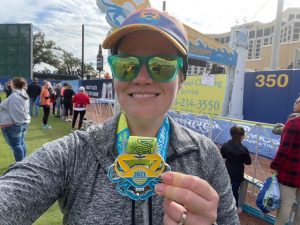
I hear my name mispronounced as I cross the finish and know that it’s true. I did it! I ran my first half marathon– 13.1 miles along the Highway 90 Gulf Coast from Gulfport to Biloxi– in 2 hours, 39 minutes, and 58 seconds, or nearly 160 minutes. Not incredibly fast, but faster than any practice I’d done.
As I clutch my medal and take a sluggish walking lap, I reflect on how far I’ve come, beyond the literal 13-mile race that began at daybreak, back to my very first run, 20 months ago in April 2020.
It was the beginning of the Coronavirus pandemic. Everything in New Orleans was shut down, including my fitness levels. Pre-pandemic, I averaged about 12,000 steps a day as a busy teacher-mama on the go, but then, stuck at home, I was struggling to get in 2,000. The numbers on the scale were starting to climb, and my morale was definitely languishing. Something had to be done.
So I decided to run, even though running is something I’ve always detested. I hated the warmup run before every high school tennis practice. I dreaded the annual one-miler in PE class. As an adult, I could never find a rhythm on a treadmill or a sports bra that actually worked. I simply can’t run, I told myself, my body isn’t made for it.
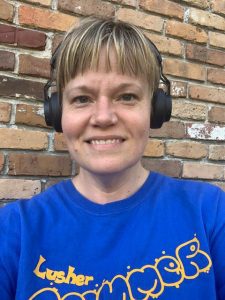
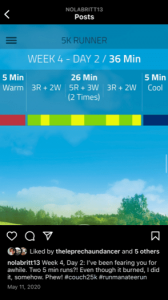
Inspired by a fellow teacher friend, I started to run with the Couch to 5K app “5K Runner.” That first day, I could barely run a full minute. The next week, 3 minutes felt like an hour. During Week 4, two five-minute runs “burned, but I did it somehow” I wrote on my Instagram post. I quickly became hooked to the routine, the post-run endorphins, and the built-in goal-setting (especially after I finally found a titanium-strength sports bra and quality running shoes). I was competing against myself and getting stronger in the process. Best of all, it required minimal equipment and prep: I simply needed to keep going out the front door.
Three months later, in July 2020, I ran my first 5K (a virtual race with friends) during an intensely humid evening in City Park. It was a struggle, but I was hooked: If I could run a 5K, why not a 10K? I was craving more distance and bigger accomplishments. Once the weather showed signs of cooling in September, I began the Coach to 10K app (“10K Runner”), and began increasing the mileage by 10% a week. 4 miles, 5 miles, then finally 6.2. Two 5Ks! I completed my first in-person local races in January 2021 (the 5.6 mile Jackson Day Race in Arabi, and the Run on the Bayou 10K at Bayou Segnette State Park).
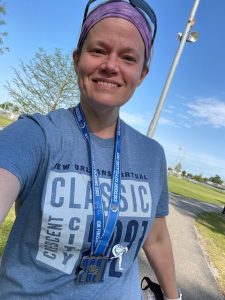
“If you can run a 10K, you can definitely run a half marathon,” a runner friend told me shortly after I finished in the top 500 in the Crescent City Classic virtual race in April 2021. What?! Surely she was misinformed, exaggerating, or definitely not speaking about a novice runner like me. A half marathon is more than two 10Ks! Still, the thought lingered. 13.1 miles? Why not? If it was too hard I could always walk.
I signed up for the Mississippi Gulf Coast Half Marathon in April 2021, one year after I began running that first minute. I planned to start training again in late summer, not yet knowing that a breakthrough case of Covid in July and a Hurricane Ida evacuation in August would force me to start from scratch.
When I started running again post-Covid and post-Ida, I could once again feel the burning in my lungs and the heaviness in my legs that haunted me from PE class and those first minutes of Coach to 5K. The difference now was that I had already learned the benefits of “pushing through the hard,” of doing something uncomfortable because you know it will benefit you. First I worked up to a 5K again, then by October, I was back up to a 10K. I followed the half marathon training plan on the Nike Run Club (NRC) app and soon found my long-distance runs to be both challenging and meditative. Getting used to running for 90 minutes, then 2 hours, and eventually 30-40 min more, takes tenacity, support, and a healthy smidge of obsession.
The “Why”
“Why?” A coworker asked in November when my weekly miles were averaging nearly 20, and my body was visibly stiff at work. “Why a half marathon?”
“Because I want to see if I can, I need it for my mental health, and at this point, giving up would be more detrimental than actually hurting myself.”
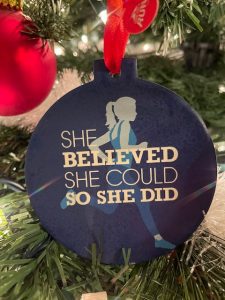
Although my response was somewhat exaggerated (not injuring myself is always my top priority), what I really meant to say was this: Pushing yourself to do something really hard, something that is at the far edge of what you think you’re capable of, and actually doing it feels INCREDIBLE. It makes you realize how few limits there are in this world, and how strong you are as one small individual. The process of making and meeting a big goal does wonders for your mental health and self-esteem. And your big goal does NOT have to involve running. It can involve ANYTHING.
Last week a family member asked me “how I did it.” How did I go from being a zero miler to 13.1? The “how” is the practical side to the “why”– it’s the method to the madness. Detailed below is my recipe for “how” to run your first minute, first mile, or first half marathon. I believe these ingredients could help anyone meet any big goal.
The “How”
The Right Gear

The importance of a quality pair of running shoes, a sports bra that really fits, and comfortable workout clothing can’t be underestimated. During my half marathon training, I also discovered the bliss of compression socks, which did wonders for my achy varicose-vein-ridden legs as the miles increased. On race day, I needed running gloves and a visor. Investing in the right gear for your body and the season will take you far through your training. And if your big goal doesn’t involve running? Get whatever gear your hobby or goal needs. As I’ll explain in more detail below, I consider the expense an investment in mental health (and much cheaper than weekly therapy).
Consistency
No matter how crazy my schedule got, or how tired I became, I ran 3 different runs 3 times a week for 13 weeks, on Tuesdays, Thursdays, and Sundays. Tuesdays were my interval training days (short-timed sprints at different paces to heighten speed); Thursdays were my tempo or recovery run day (depending on what my body needed); Sundays were my long-distance run day. If my son had football practice at City Park, I ran in the park; if my daughter had ballet, I ran on the streetcar tracks near her studio. The main thing is to not give up. Most training programs recommend more runs (4-5 a week) as well as cross-training. For me, teaching was my cross-training. I lift heavy books, go up and down countless flights of steps, and walk students around campus daily. Lifting weights, swimming, or biking would also help build strength and makes you less susceptible to injury, but also takes more time and energy. That said, if I ever train for a half marathon again, I would definitely work some cross-training into the mix.
Not a runner? Do what it takes to achieve that goal on a regular, consistent basis.
Support
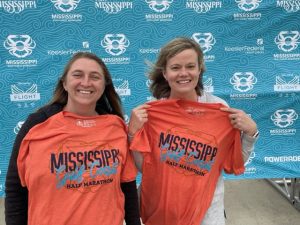 My husband watched the kids, sometimes for multiple hours, throughout my training, and congratulated me on every new milestone. He didn’t complain when I woke him up at 6 am on the weekends for “another race.” My runner friends kept motivated online and in-person, offering tips and tricks for managing such a hefty distance. My good friend Julia signed up to walk the Mississippi Half with me- and we frequently checked in to hold each other accountable during our training weeks. My weekly Instagram posts were cheered on by friends and family near and far. The community you cultivate as a seeker of big goals is what will truly keep you going — their reassurance is especially needed when self-doubt inevitably creeps in.
My husband watched the kids, sometimes for multiple hours, throughout my training, and congratulated me on every new milestone. He didn’t complain when I woke him up at 6 am on the weekends for “another race.” My runner friends kept motivated online and in-person, offering tips and tricks for managing such a hefty distance. My good friend Julia signed up to walk the Mississippi Half with me- and we frequently checked in to hold each other accountable during our training weeks. My weekly Instagram posts were cheered on by friends and family near and far. The community you cultivate as a seeker of big goals is what will truly keep you going — their reassurance is especially needed when self-doubt inevitably creeps in.
Planned “Dress Rehearsals”
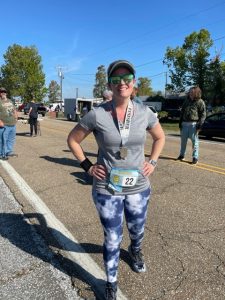
Scheduling a few local races (“dress rehearsals”) during my training kept me motivated and also lowered my anxiety as the half-marathon approached. 3 weeks before the Half, I ran the Old Highway 51 ten-mile race in Manchac. It was my first time racing in double-digits. Two weeks before, I ran a full half-marathon on the Algiers levee, completely alone. The 45-minute drive before the ten-miler and the isolation of the levee half were conditions that were “harder” than what I had planned in Mississippi for race day. In other words, if I could drive 45 minutes to Manchac and run 10 miles, I could surely wake up in Gulfport and run 13. If I could run 13.1 alone on the levee, without the adrenaline rush of a race and fellow runners to keep me going, I could surely do it for real on race day.
Determination
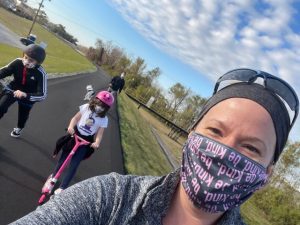
Consistency, support, and planning are things that most people can cultivate and learn, but determination is a little harder to grow. I’ve always been a very competitive, stubborn person who does NOT like to give up. Giving up has always adversely affected my mental health. A sport like running has truly given my life direction. The best part is that it has taught me to compete against myself. I’m always trying to improve my best race time, mile time, or distance run — and I’m not competing against anyone else. Running a “PR” (personal record) is its own reward — medals and place finishes are secondary. Still, it’s important to be realistic and kind to yourself along the way. If I felt sluggish one day, I would postpone a run to the next day, or lower the mileage (and tack it on to a run later in the week).
I also learned the importance of allowing little room for excuses. I’d lay out my running clothes and accessories in the bathroom the night before bed; I’d pack my gear and bring it to work if I had to fit in a run after school. Make it more difficult to NOT train than to just suck it up and do it.
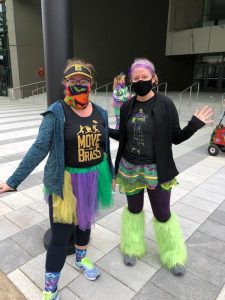
Mental and Physical Health
Feeling mentally and physically strong is both why and how I run. While I didn’t lose any weight training for a half marathon, I definitely increased muscle mass and look leaner; I went down a full dress size. Most importantly, I feel much more energized, confident, and in control. I can run up the stairs without getting winded, hold yoga poses I used to wobble before, and ultimately know that I am the captain of this ship. The Covid-19 pandemic may not be over and hurricanes may still happen, but I can definitely count on myself — all I need is two legs, a good pair of running shoes, and a door to run out of.
Running long miles also requires mental gymnastics that have boosted my brainpower. Learning to “trick yourself” into viewing a 10-mile race as five 2-milers, or a 13.1 half marathon as “about four 5ks” translates into more manageable goal setting in your daily life. 4 loads of laundry to do? I’ll do 2 today and 2 tomorrow. Several stacks of papers to grade? I’ll do one-third each day for three days. Endless to-do list? Chop it into a few tasks per day.
Moving Forward
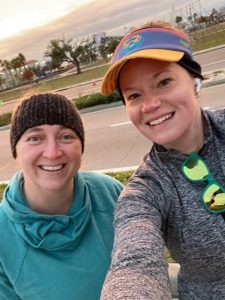
As I lined up with fellow runners in the pre-dawn dark on a windy, 40-degree December day, I questioned every single “why” and “how.” Julia and I truly questioned our sanity as we bounced up and down to keep our hands and legs warm, and waited impatiently for the sun. What were we doing? We should be sleeping! Once the race started at 7 am and the sun slowly rose, all of us runners, hundreds of tiny infinitesimal ants dotting the coastline, were bathed in a golden glow. Strangers cheered and held up hilarious signs (“smile if you’ve peed yourself” “this seemed like a good idea 4 miles ago”). The mile signs ticked by. I zoned out with my favorite mix and the wisdom of Coach Bennett’s words on the Nike Run Club app. I was propelled by adrenaline and euphoria to be actually doing something I had anticipated and trained for so long. It was honestly one of the best days of my life.
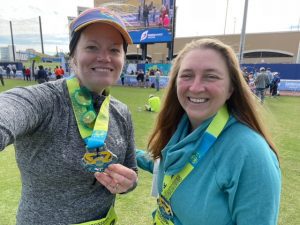 Weeks later, I still feel that adrenaline and euphoria, even though I don’t know when my next run or distance will be. I intend to bathe in this glow a little longer before making another big goal– whether it involves running or something completely different. Just knowing that another big goal is possible keeps me feeling positive, especially during such uncertain times. I may not know when I’ll see my extended family in New York again, or when it’ll be safe to go to a crowded gathering, but I know I’m capable of doing big things and becoming a better me in the process.
Weeks later, I still feel that adrenaline and euphoria, even though I don’t know when my next run or distance will be. I intend to bathe in this glow a little longer before making another big goal– whether it involves running or something completely different. Just knowing that another big goal is possible keeps me feeling positive, especially during such uncertain times. I may not know when I’ll see my extended family in New York again, or when it’ll be safe to go to a crowded gathering, but I know I’m capable of doing big things and becoming a better me in the process.






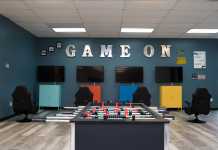








![Why Everyone Should Do the CCC Once [Even If You Don’t Run]](https://neworleansmom.com/wp-content/uploads/2023/04/IMG_0875-100x70.jpg)

Congratulations Brittney! You are a great role model for teacher, parents, students, etc! I enjoyed reading your inspirational story! ~ Carol Whelan